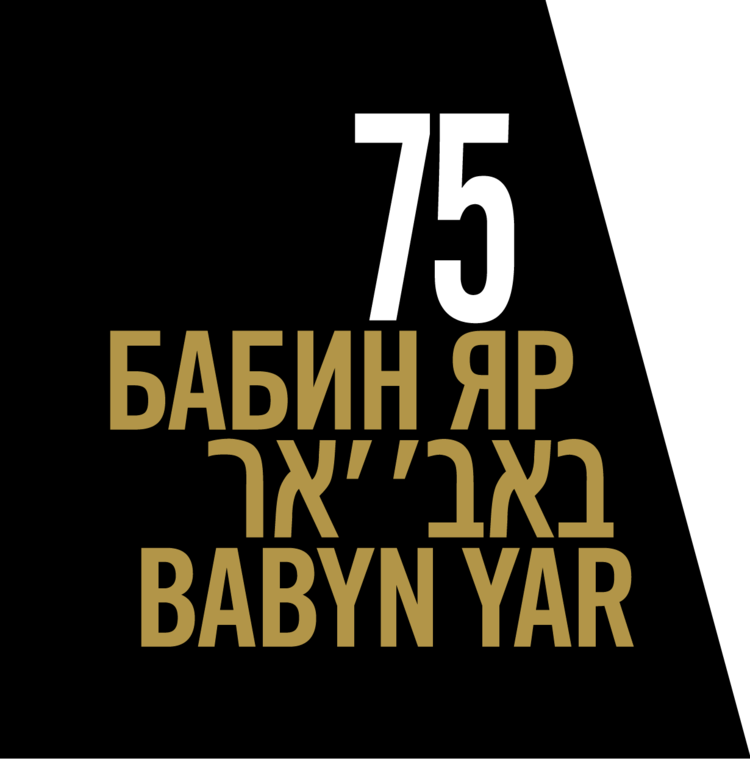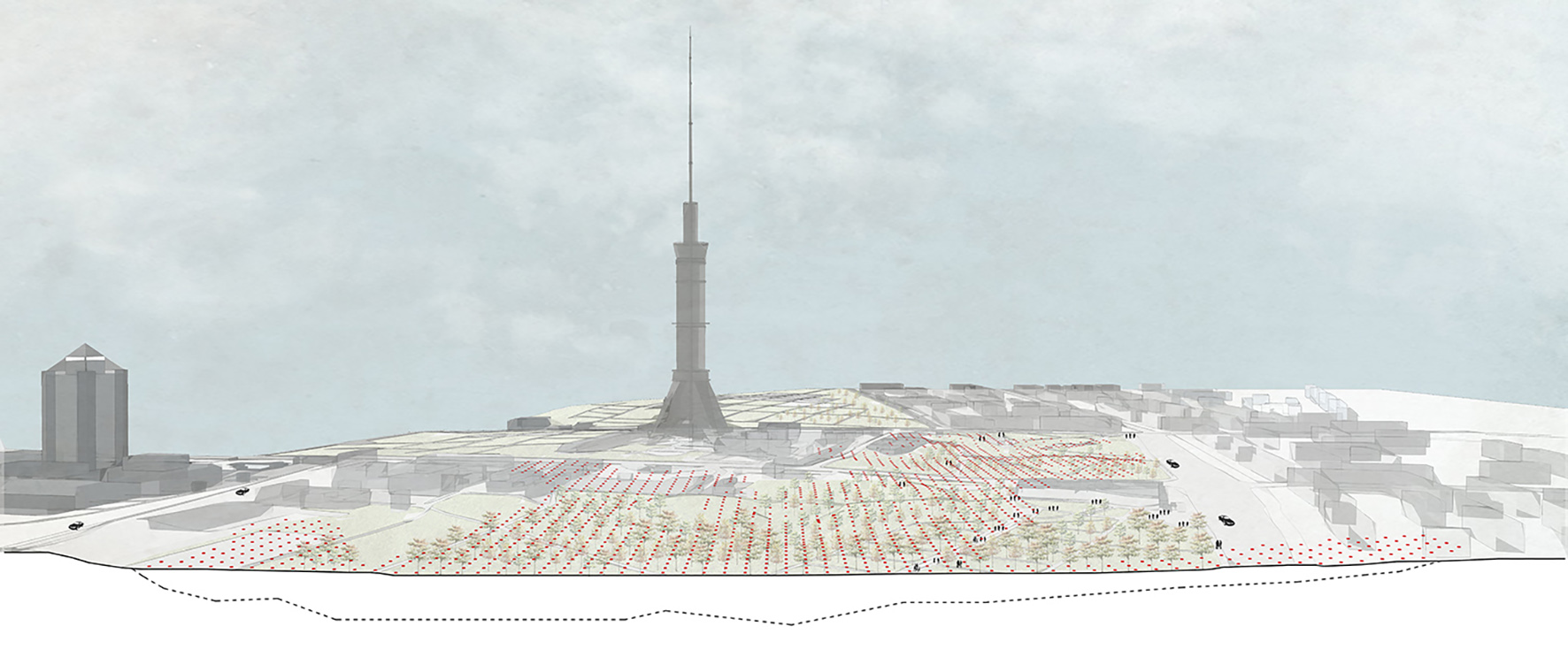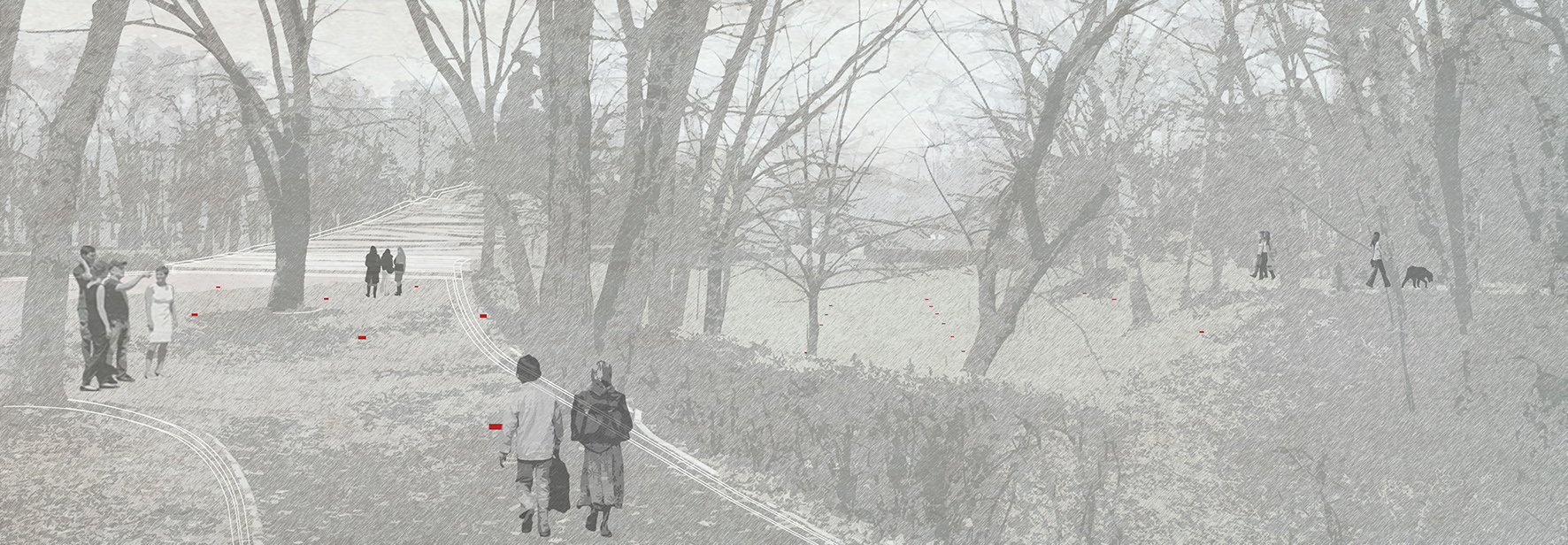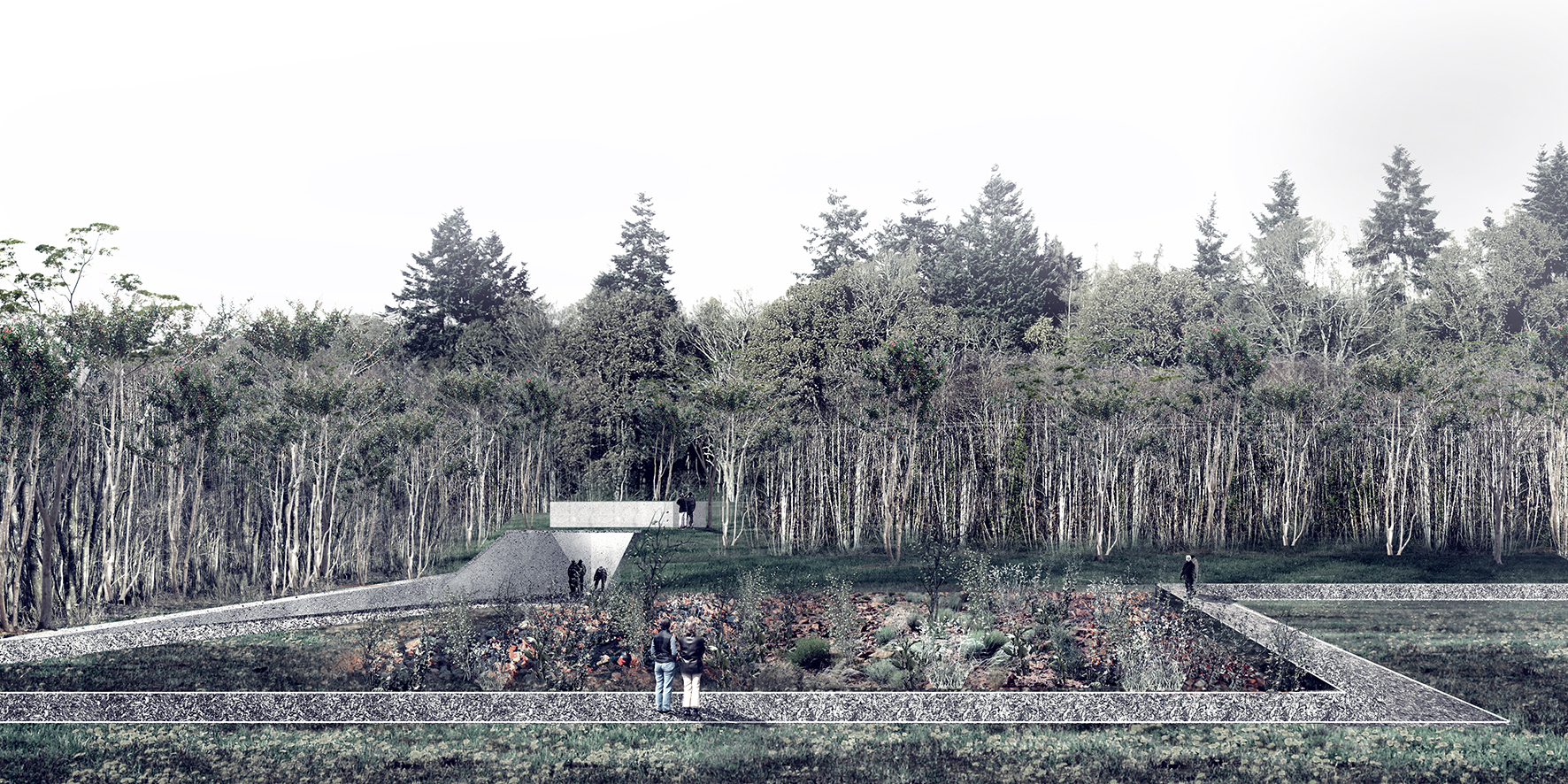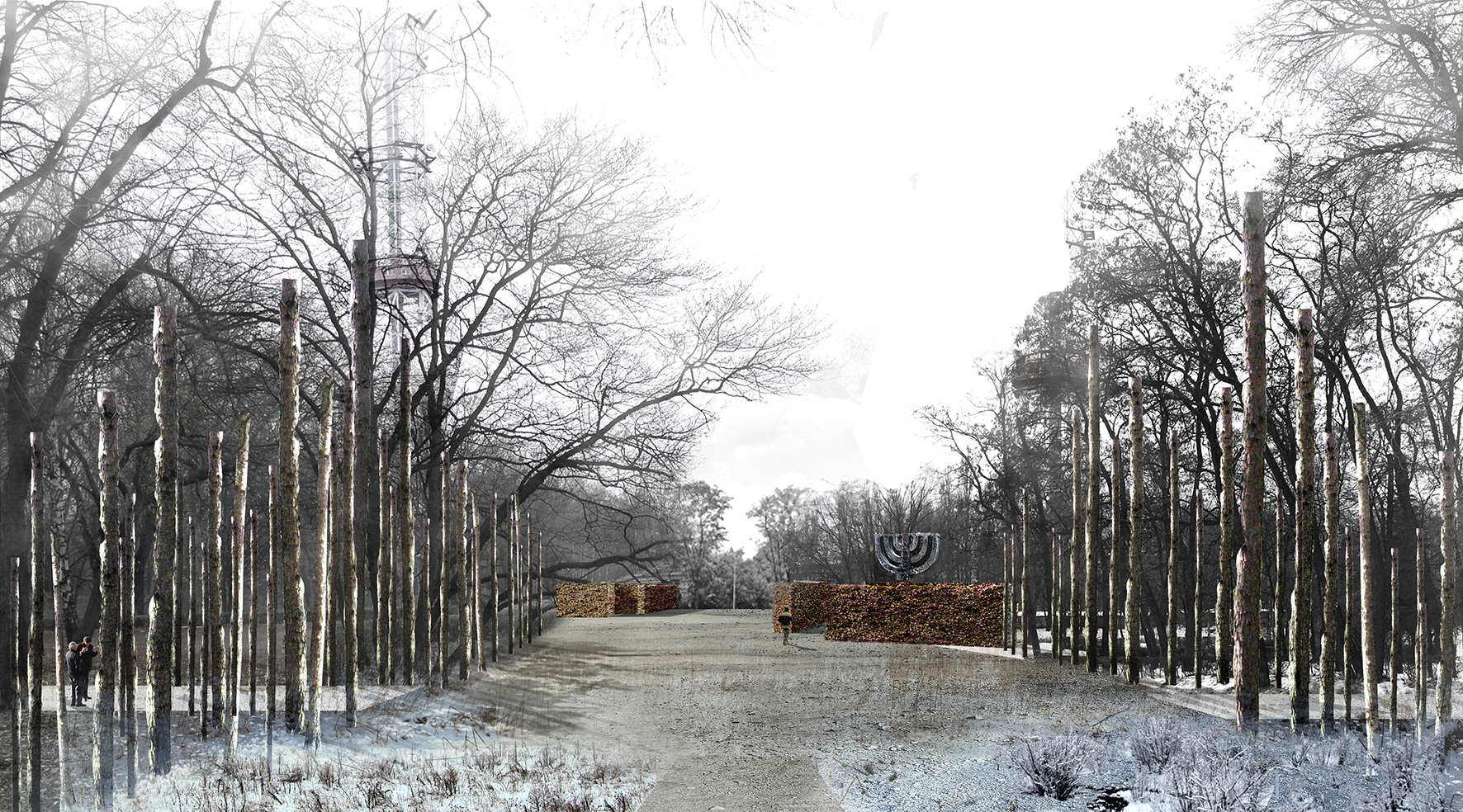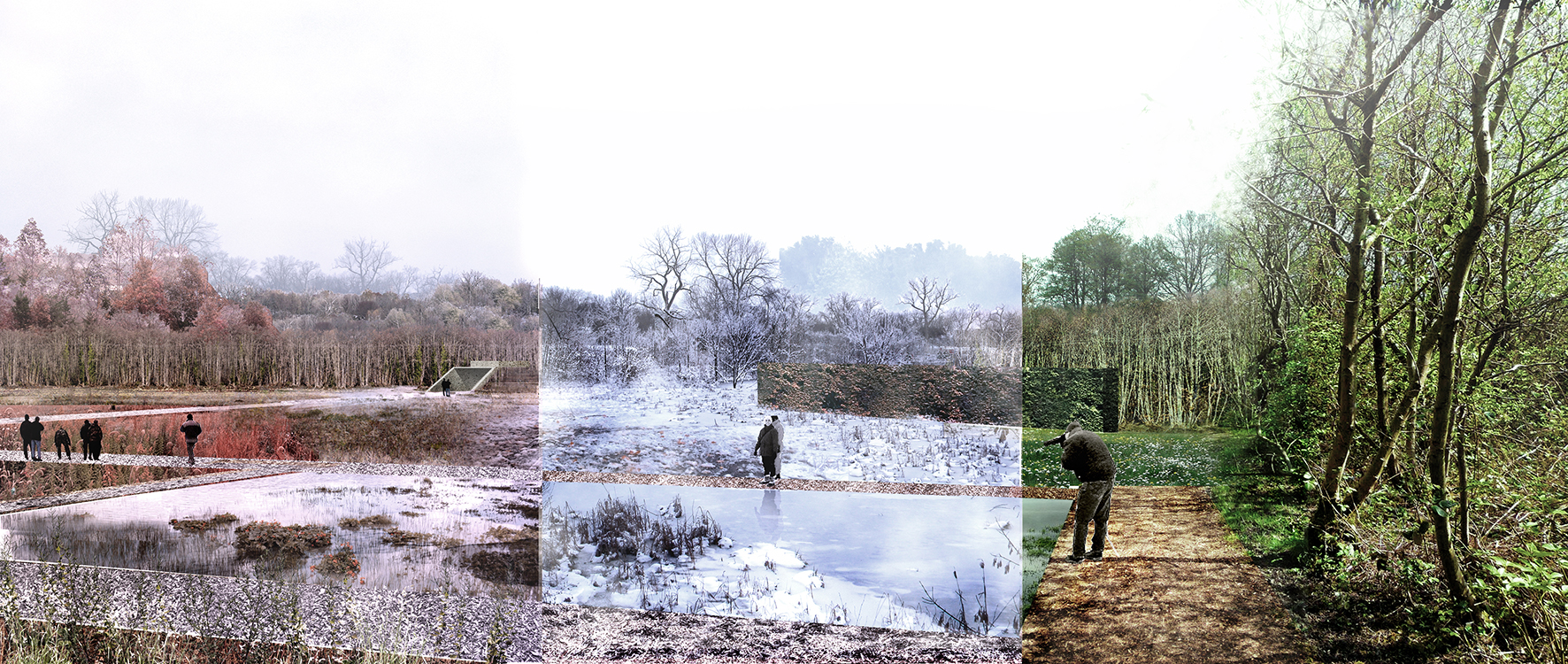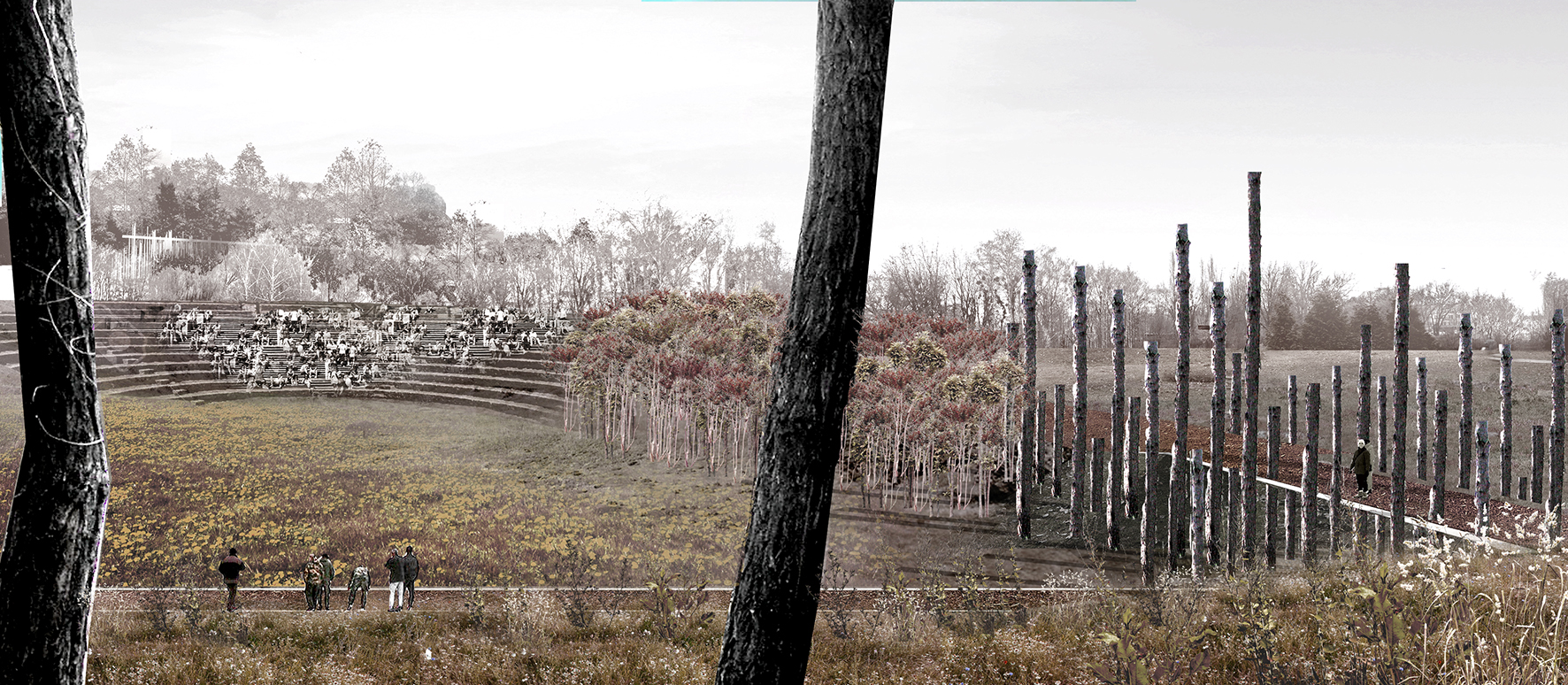Memorial Space
Chairperson: Vitaliy Nakhmanovych
Executive Secretary, Public Committee for the Commemoration of the Victims of Babyn Yar
Senior Research Scholar, Museum of Kyiv History
Memorial Space
The City of Kyiv and the Ukrainian government are being encouraged to protect legally the territory of Babyn Yar as an inviolable historic and commemorative site. As an element of the Babyn Yar commemoration, an international competition was launched for a landscape design that best proposes the transformation of Babyn Yar into a historic preservation site: a necropolis or sacred place of memory honoring those buried beneath its grounds. The area should be delineated and protected from commercial, residential, recreational, and any use other than commemoration of the dead. Guidelines for the competition are found at http://konkurs.kby.kiev.ua/en/. The competition was conducted under the auspices of the International Union of Architects (Paris) and the National Union of Architects of Ukraine (Kyiv). Public announcement of the top three memorial space designs will take place at a ceremony during the week preceding September 29.
Competition Goal
The competition client has a motivation to see the projects arising from the competition materialize. However, the client is not the owner of the territory and is not legally entitled to implement the projects independently. Therefore, the only course of action is to deploy consistent efforts aimed at persuading the landowners and authorized land users, as well other stakeholders and the wider public, of the necessity of having this project realized. The competition is envisioned as a first step in that direction.
Today, Babyn Yar is chiefly a place for regular recreation, not always of the cultured kind, for the residents of the surrounding districts of Kyiv. At the same time, Babyn Yar is a site of pilgrimage by Ukrainian Jews, representatives of the Jewish diaspora, and other international visitors who come to pay respect to the victims of the Holocaust. It is also a place of remembrance for all citizens of Ukraine and Kyivans, who recall the crimes of the Jewish Shoah as well as other horrors of the Nazi occupation and Soviet totalitarian rule.
Thus, the aim of the competition should be to create a clearly marked out space, in which both those who are coming with the explicit goal of honoring the memory of the dead and regular local residents or students of the nearby colleges and universities would at once feel the connection of this place to the tragic history of the Holocaust and other tragedies that had happened here.
In the humanitarian context, therefore, the competition objective is to create a space of reflection and acknowledgement of the extreme inhumanity and tragic events that occurred at this site in the past, and to unite contemporary citizens of Ukraine of all ethnic backgrounds in the spirit of mutual empathy for past sufferings, affirmation of the value of every individual human life, and aspirations for a just and humane society.
In the context of memorial architecture, the competition objective is to present to the public, governmental institutions, and the professional community ideas for creating a comprehensive memorial space as an alternative to chaotic installation of separate monuments.
In the spatial context, the competition objective is to create a modern holistic public memorial space which is integrated with the city structure through the means of landscape design.
In the educational context, the competition objective is to employ landscape design to create a space capable of conveying to visitors (including those who have no connection to this place either through personal or through familial memory) the value of remembrance, as well as ideas of humanism, tolerance, democracy, civil society, human-rights defense, and natural and spiritual ecology—in effect, life-affirming responses to the evils of the Holocaust and other tragedies that occurred on this space.
In the social context, the competition objective is to present to the public a model of quality holistic structuring and integration of an urban recreational area that is a historical-memorial site of global significance.
In the educational context, the competition objective is to employ landscape design to create a space capable of conveying to visitors (including those who have no connection to this place either through personal or through familial memory) the value of remembrance, as well as ideas of humanism, tolerance, democracy, civil society, human-rights defense, and natural and spiritual ecology—in effect, life-affirming responses to the evils of the Holocaust and other tragedies that occurred on this space.
In the social context, the competition objective is to present to the public a model of quality holistic structuring and integration of an urban recreational area that is a historical-memorial site of global significance.
Introduction
Babyn Yar is a complex historical symbol. For centuries Babyn Yar was a multi-ethnic and multi-faith necropolis linked to the history of Kyiv. It became part of world history in the fall of 1941, when nearly 34,000 Kyivan Jews were murdered over two days in one of the largest single Nazi massacres during World War II. They were massacred for the sole reason that that they were Jews, whom the Nazi ideology designated to be chief enemies of the so-called “superior Aryan race”. This became a part of Nazi Germany' ambition to destroy all Jews throughout the world, a unique atrocity in human history. Babyn Yar thus became a symbol of the Holocaust, a symbol, in particular, of what in recent years has come to be called the “Holocaust by Bullets”—the mass shootings of Jews on the occupied territories of the then Soviet Union, as distinct from the better known gas chambers in Auschwitz and other death camps. Non-Jews were also murdered or buried at Babyn Yar during the war. In the two years of German occupation up to November 1943, this site was used as a place of execution or burial of persons and entire groups who were also considered to be enemies of the Nazis. Estimates point to at least 100,000 victims, the vast majority (over two-thirds) of whom were Jews.
Subsequently, the Soviet regime tried for decades to destroy the ravine (Yar) itself, as well as the national and ethnic identity of its victims, as evidenced in the 1976 massive Soviet bronze monument dedicated to “Over One Hundred Thousand Citizens of the City of Kyiv and Prisoners of War” killed in 1941-1943 “by German-Fascist Invaders.” By that time, Babyn Yar also became the scene of the Kurenivka disaster—a tragic mudslide that happened in 1961 and claimed 145 lives according to just official sources, but more likely 1,500 lives according to later estimates by historians.
After Ukrainian independence in 1991, a bronze sculpture in the shape of a menorah was erected to mark the specifically Jewish tragedy at Babyn Yar. This was followed by a wooden cross to commemorate ”621 activists of the anti-Nazi underground from the Organization of Ukrainian Nationalists” shot by the Germans, and by twenty-seven additional commemorative signs dedicated to different groups and specific individuals massacred or buried in Babyn Yar. As a result of the uncoordinated proliferation of competing monuments and the overall physical neglect of the site, Babyn Yar turned into a chaotic space that does not properly reflect the meaning and significance of the tragic events that transpired here.
The principal goal for the organizers (and thus also for the future entrants of the competition) is to create a comprehensive memory site—the “Babyn Yar—Dorohozhychi Necropolis” memorial park. The objective is to transform what is now a littered woodland park / recreational park into a site conducive to reflection and respect for the victims that lie here. At the same time, this area must remain open to memorialization efforts down the road as a consequence of dialogue and as a result of the cooperation of different communities and parts of the society.
Best projects
The jury members congratulate all candidates for addressing such a complex site and quest. Although there were highly suggestive entries, the jury did not feel that any one entry addressed the issues raised in the brief in a comprehensive way, and all winning projects left unanswered questions. The jury therefore decided by unanimous vote to award two second prizes: one to each of the two entries that best addressed the main issues stated in the brief.
The jury recommends combining the prize money allocated for the 1st and 2nd prizes and equally dividing it and awarding it to the two 2nd-prize-winners.
2nd prize:
Autors:
Connatural + Glenn Pouliquen
2nd prize:
Autors:
Jana Petkovic — Architect — Lubliana, Slovenia
Nejc Lebar — Architect — Lubliana, Slovenia
Maja Valentic — Architect — Lubliana, Slovenia
ilos Kosec — Architect — Lubliana, Slovenia
3rd Prize
Autors:
Miriam Gusevich — Principal — USA
Jay Gabriel
Peter Miles
For further detail on the compitition and other entrants visit..... http://konkurs.kby.kiev.ua/en/best-projects/
